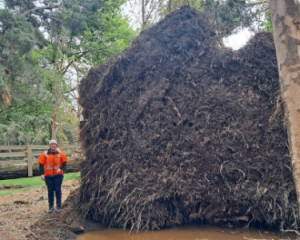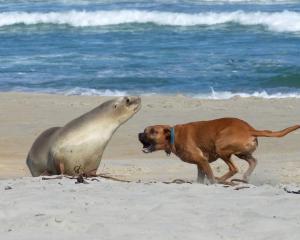Seven cases of a rare strain of salmonella have been found in the Otago-Southland region since the start of the year, but the cause of the outbreak, which has mainly affected South Island centres, remains unknown.
The Ministry of Health is working with local and national authorities to determine what has caused the outbreak of salmonella mbandaka, a strain rarely seen in New Zealand.
It is believed to be responsible for the death of an elderly Nelson woman in February.
Otago-Southland medical officer of health Dr John Holmes said there had been a total of 30 cases throughout the country this year. Five were in Otago and two were in Southland.
Only one of the Otago-Southland cases had resulted in hospitalisation, and all who had contracted the illness had recovered.
About a third of the cases occurred in the Nelson-Marlborough region, three were in Canterbury, and South Canterbury and the West Coast had one case each.
Director of public health Dr Mark Jacobs said there had been a marked increase in notifications of the infection since the beginning of the year.
‘‘However, it's worth noting at this stage no food premises have been implicated, and all food samples tested have returned negative results,'' Dr Jacobs said.
‘‘While there's not a great difference in the number of cases reported, we don't usually see the mbandaka strain in New Zealand, and this is one of the things causing concern. We're working with other authorities to find out where it's come from and to stop its spread as quickly as possible.''
By mid-March this year, there had been 259 reported cases of salmonella infections. In the three months to the end of March last year there were 304 cases.
Dr Holmes said there were about 2000 different sorts of salmonella worldwide, and the mbandaka strain was relatively uncommon.
Salmonella are bacteria which typically live in the gut of domestic and wild animals, including poultry, pigs, cattle, rodents and pets, such as cats, dogs, turtles and chicks.
Symptoms usually included diarrhoea, stomach cramps, fever, nausea, vomiting and headache.
Common risk factors in New Zealand include contact with farm animals and pets, drinking untreated water and overseas travel during the incubation period.
About 2000, an outbreak with a different strain of salmonella was associated with sparrows.
- One case of legionellosis was recorded in Otago during February, one of six throughout the country.
Dr Holmes said it was probably related to the use of potting mix. He reminded people to heed warnings on bags of potting mix, which included not opening bags in enclosed areas avoiding the inhalation of dust from the mix, wearing gloves and ensuring hands were washing after its use.











